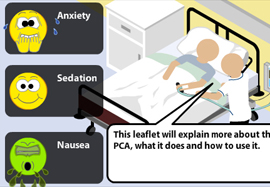


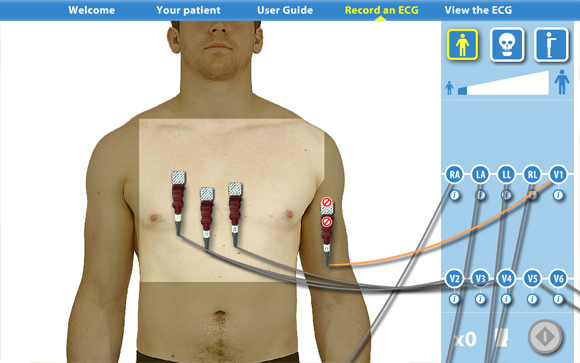
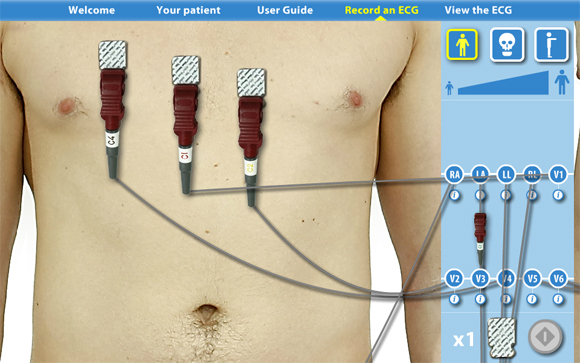
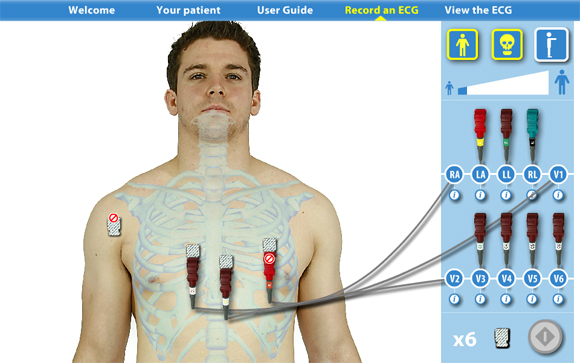
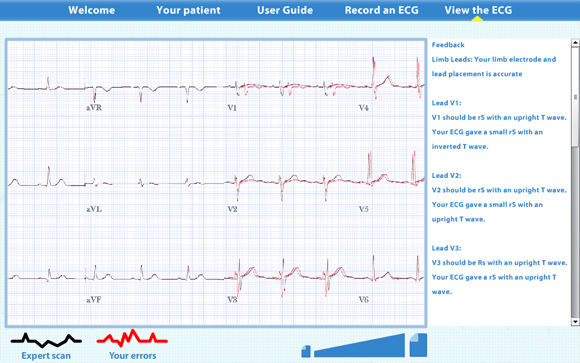
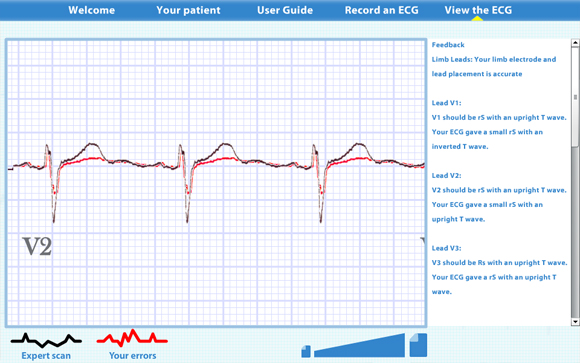
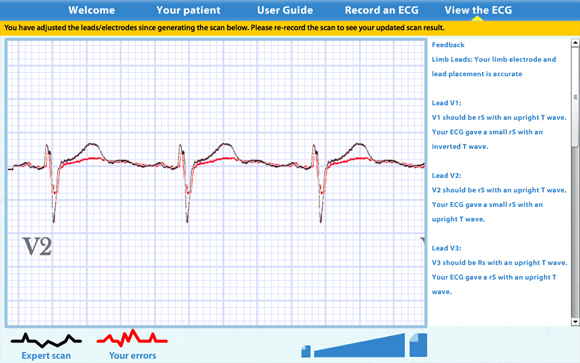
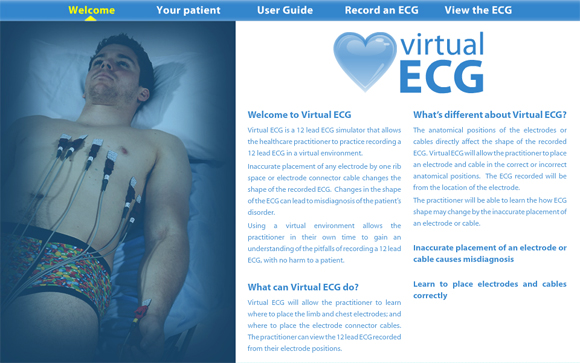
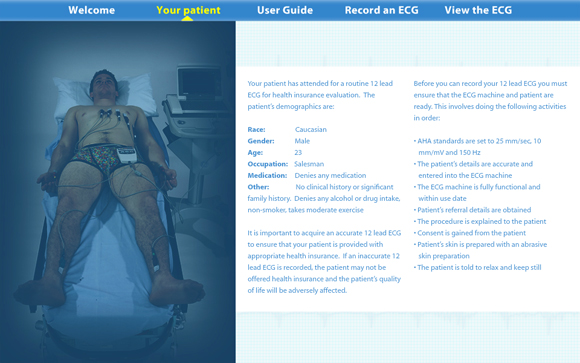

Accuracy can be the difference between life and death
12 lead ECG (Electrocardiograph) scans are a common diagnostic tool for assessing damage to the heart. ECG scans are performed by a variety of different health care practitioners, who attach ten electrodes and leads to a patient to record the rate and regularity of heartbeats. Each scan produces a series of waveforms printed on graph paper. Expert interpretation of these printouts can reveal life threatening conditions, such as the symptoms of a myocardial infarction – in layman’s terms: a heart attack.
Therefore, it is important that ECG scans are recorded accurately. Inaccurate recordings have the potential to provide false positive diagnoses, leading to either, unnecessary treatment for non-existant conditions, or non-treatment of serious, possibly fatal, pathologies. Mis-placed electrodes and incorrectly attached cables – each cable should be attached to an electrode at a specific location on the patient’s body – are the most common causes of inaccurate ECG scans.
Practice makes perfect
Virtual ECG is an online, high fidelity, simulation that aims to reduce the incidence of inaccurate ECG scans by teaching accurate recording of ECG scans through practice. Learners attach the ECG electrodes and cables to a ‘patient’ and record an ECG. The simulation then generates an ECG recording comensurate to the configuration of electrodes and cables; utilising real ECG data, the simulation is capable of generating in excess of six trillion unique ECG scans. The result of the learner’s recording is overlaid with an expert’s recording for the ‘patient’. Where the learner’s recording does not match the expert recording, errors are displayed. Textual feedback is also given to help the learner understand their mistakes. Using the visual and textual feedback learners can assess where they failed to correctly configure the recording, make adjustments to improve their accuracy and re-record the scan. Learners are invited to repeat the process until they have mastered the skill.
ECG skills and knowledge have traditionally been taught in a didactic manner. While some courses provide access to physical simulation suites, access to them is limited by time and costs. As an online, virtual simulation, Virtual ECG provides a bridge between the theoretical and physical domains. Learners can apply theoretical knowledge, practicing and developing their conceptual understanding without the limits of time and location. Thus, learners are better prepared for physical simulations, and likely to gain more from those experiences. Furthermore, learners can re-enforce their learning and continue to practice virtually after a physical simulation, with a wider variety of patient body shapes.
Virtual ECG has been developed by the University of Glamorgan for use by both undergraduate nursing students and as CPD for existing healthcare practitioners. Currently, it features one ‘patient’ – a young, adult male. It is envisaged that ‘patients’ of both genders and a range of ages will be added.
For this project I was responsible for both design and development (using Flash and Actionscript 3). However, it would not have been possible without the input of Peter Lewis, a cardiac physiologist. Peter provided the academic and medical expertise required by the project. As with other healthcare simulations I have worked on, close collaboration between myself and the academic has been key to the project’s success.
Going head-to-head with Vinny Jones and Tintin
In April 2012 Virtual ECG was a finalist in the British Universities Film & Video Council ‘Learning on Screen‘ awards in a ceremony hosted by Lord (Robert) Winston at the BFI Southbank, London. Shortlisted in the ‘Courseware and Curriculum Award’ category, it faced competition from, amongst others, an interactive educational CD-ROM for 7–13 year olds based around the Tintin film ‘The Secrets of the Unicorn and the British Heart Foundation’s ‘Heartstart: Skills for Life‘ training campaign, which is fronted in a UK television ad campaign by film actor and former professional footballer Vinny Jones.
In August 2012 Virtual ECG was a semi-finalist in the Adobe Design Achievement Awards 2012 (ADAA) in the ‘Innovation in Interactive Media in Education’ category. ADAA is a global competition which in 2012 attracted 4969 entries across 16 categories in traditional media, interactive media and video/motion.
The semi-finalists are listed on the ADAA website and on Facebook (N.B. Virtual ECG is listed under ‘Barry Richards’).
Visit the Virtual ECG site: https://ecg.glam.ac.uk